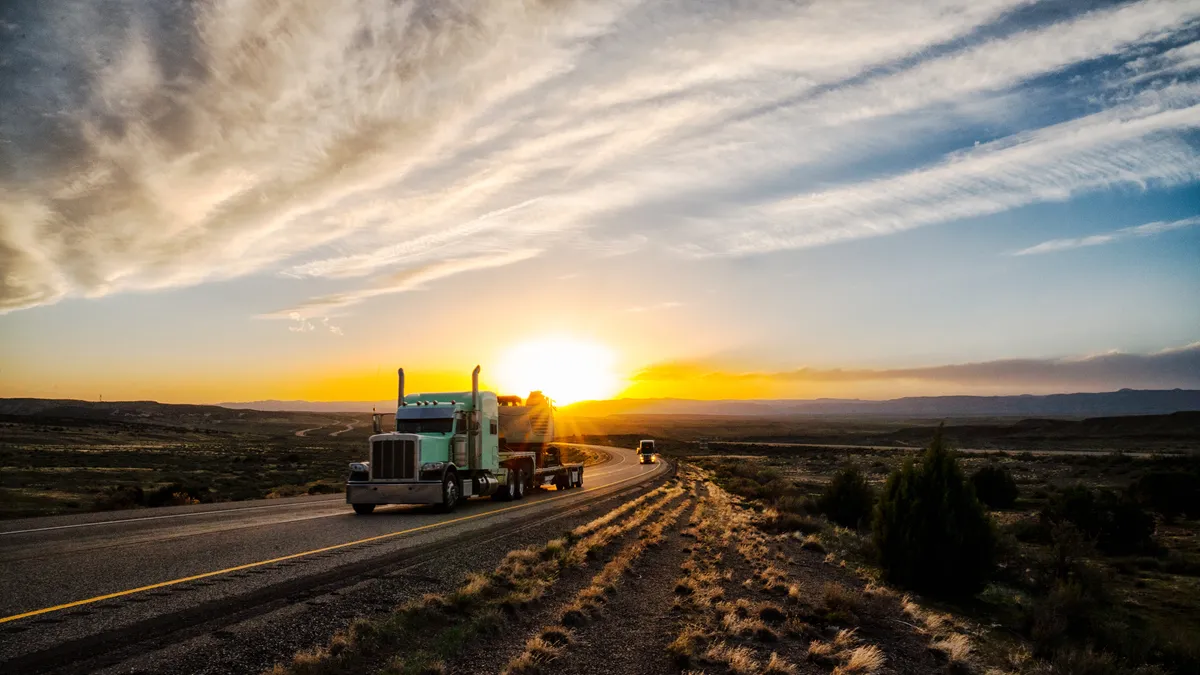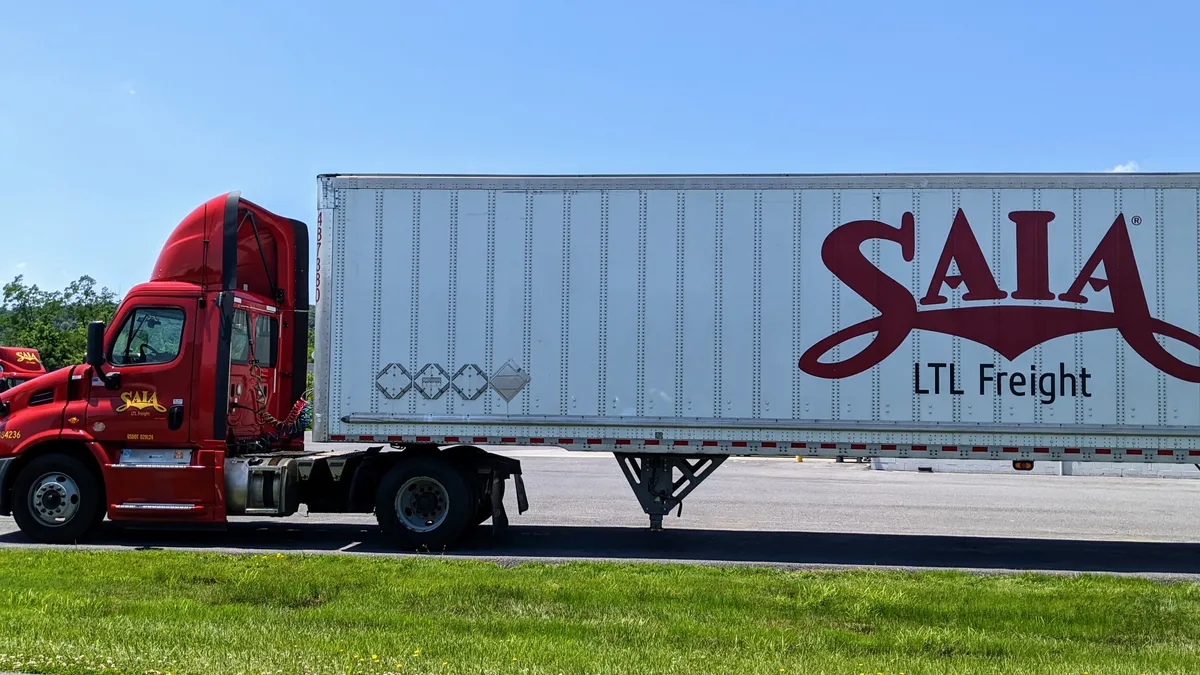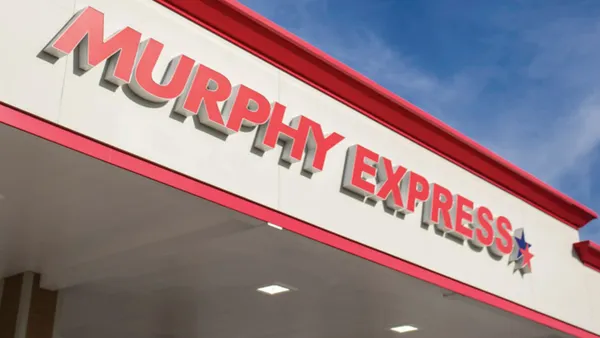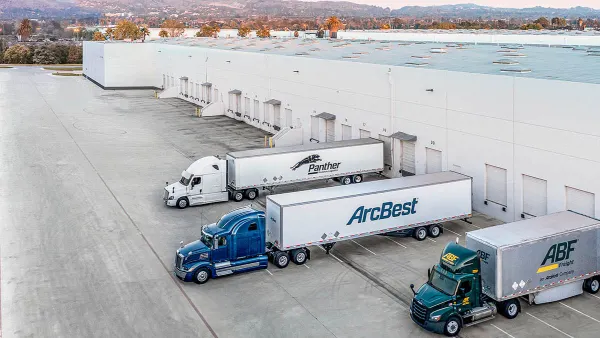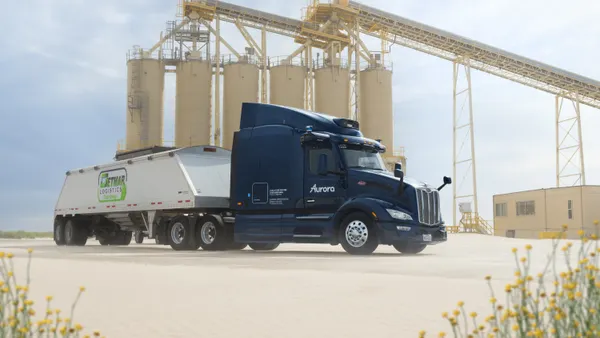This story is part of a three-part series on the past, present and future of visibility between carriers and shippers. Click here to view the entire package.
Consumers in the U.S. are accustomed to knowing where their item is, at almost any time.
They get emails and texts about the path of a purchased item, from its origin to their front door, and they can use an app to follow a grocery order to know if it'll be delivered in time for dinner. Sometimes they'll even get a photo of the item texted to them when it's at its final destination.
"It's almost a Google Maps mindset of: I know where I'm at, and it'll also tell me when I get to my destination," said Suresh Acharya, professor of practice and academic director for the MS in Business Analytics program at the University of Maryland Robert H. Smith School of Business. "Transportation visibility is obviously a lot more than that."
True visibility would let shippers and carriers know where that load is at all times, and not just between point A and point B. Those capabilities can be obtained through expanded use of mobile technology and adoption of IoT sensors on the loads themselves, in warehouses and in the yard.
But for an industry that still brokers loads over the phone in some cases, that's a big technology leap.
A history of fragmentation
One of the biggest historical challenges to creating more visibility is the fragmentation of an industry worth more than $700 billion, said Chris Pickett, chief strategy officer of Flock Freight.
There are 988,014 for-hire carriers and 720,708 private carriers in the U.S., according to the FMCSA. Most freight-carrying trucking firms are small.
Freight is "an industry that resists consolidation. You could argue there really aren't any economies of scale, therefore, you have this fragmented, asset-based motor carrier industry," Pickett said.
Larger carriers can afford more sophisticated tracking technology, but small carriers can't and/or aren't interested. Technology adoption is a large expense that carriers with fewer resources have more trouble justifying. There hasn't been an argument made that is compelling enough for blanket adoption of the same kinds of technologies that let consumers know in real time where their orders are.
"You could argue there really aren't any economies of scale, therefore, you have this fragmented, asset-based motor carrier industry."

Chris Pickett
Chief Strategy Officer of Flock Freight
Mandated ELDs have bridged some of that gap. Shippers and carriers moving to a standardized electronic data interchange helped, too, said Acharya.
"From a planning perspective, you know what needs to be picked up, you'll roughly know when it'll be delivered," he said.
But that's not enough information to optimize efficiency — a precious concept in today's clogged supply chain environment.
"That doesn't necessarily imply that the trailer can be worked on when it gets there," Acharya said of time-of-delivery estimates. "If congestion in the yard is high, that's not something that any of these systems can detect."
Mobile technology starts to make real-time inroads
The adoption of smartphones is already helping to bridge the visibility gap, and data produced by those phones are used in tandem with ELD information to get a better handle on where a driver is at, and when he or she might arrive.
However, there is no standard app for those purposes, and drivers who are carrying loads for multiple companies won't necessarily want to download an app for each customer onto their smartphone.
"The challenge here is the proliferation of pipes you would need to account for in terms of all the different sources of data sources for positioning and time stamps," said Pickett. That's a long way off, especially in an environment with dozens of ELD vendors.
"The challenge here is the proliferation of pipes you would need to account for in terms of all the different sources of data sources for positioning and time stamps."

Chris Pickett
Chief Strategy Officer of Flock Freight
"In a perfect world, there'd be one ELD vendor platform and it's such a superior solution that it's much easier to aggregate those signals and allow folks to tune in when those parties are transacting," he said.
Smartphones are also still generally used as "a phone in the pocket of that truck driver in the truck," he added, which is tracking the truck but not necessarily the load. And that isn't always helpful when looking for locations of pallets or partial loads that will be hauled by different carriers before reaching its final destination.
Visibility is improving, especially as major freight companies make having those apps a requirement. But it's still a long way to go for that Google Maps-type experience.

